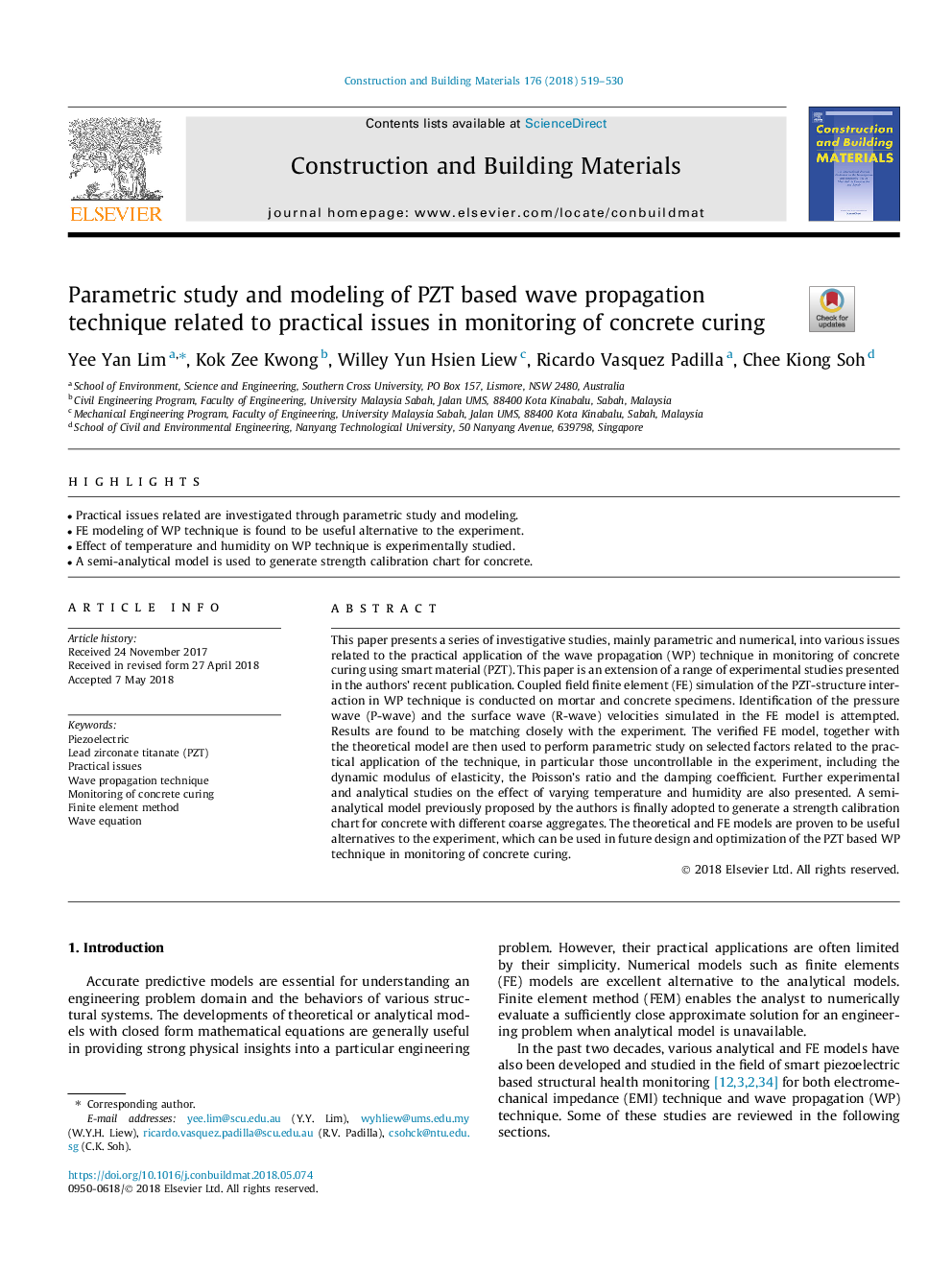| Article ID | Journal | Published Year | Pages | File Type |
|---|---|---|---|---|
| 6713206 | Construction and Building Materials | 2018 | 12 Pages |
Abstract
This paper presents a series of investigative studies, mainly parametric and numerical, into various issues related to the practical application of the wave propagation (WP) technique in monitoring of concrete curing using smart material (PZT). This paper is an extension of a range of experimental studies presented in the authors' recent publication. Coupled field finite element (FE) simulation of the PZT-structure interaction in WP technique is conducted on mortar and concrete specimens. Identification of the pressure wave (P-wave) and the surface wave (R-wave) velocities simulated in the FE model is attempted. Results are found to be matching closely with the experiment. The verified FE model, together with the theoretical model are then used to perform parametric study on selected factors related to the practical application of the technique, in particular those uncontrollable in the experiment, including the dynamic modulus of elasticity, the Poisson's ratio and the damping coefficient. Further experimental and analytical studies on the effect of varying temperature and humidity are also presented. A semi-analytical model previously proposed by the authors is finally adopted to generate a strength calibration chart for concrete with different coarse aggregates. The theoretical and FE models are proven to be useful alternatives to the experiment, which can be used in future design and optimization of the PZT based WP technique in monitoring of concrete curing.
Related Topics
Physical Sciences and Engineering
Engineering
Civil and Structural Engineering
Authors
Yee Yan Lim, Kok Zee Kwong, Willey Yun Hsien Liew, Ricardo Vasquez Padilla, Chee Kiong Soh,
